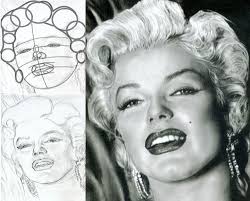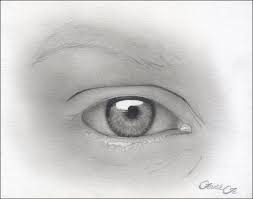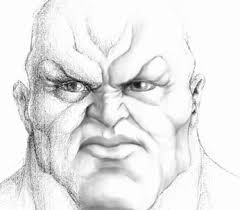Source:Google.com.pk
Pencil Drawing Techniques Biography
After years of cajoling from students and friends, I’m finally sharing some of my techniques through video on this website.
The response has been tremendous!
Here’s a comment that was just left by someone who had gone through the video tutorials...
Thank you again for taking the time to put these videos together. I feel very fortunate to have found you.
“I used to think drawing was completely out of my reach. I now see that it is absolutely not the case!”
There are over 2 hours of free video that cover the core techniques. You’ll learn the exact same secrets that my students have used to draw amazing portraits that capture their subject’s personality.
You’ll learn about...
Materials for the 5-pencil method —paper, pencils, erasers, brush, and more
The stroke and a simple exercise
3 rules that keep your drawing from going flat
A drawing exercise to learn about each pencil
An exercise for our pencils to interact
We’ll begin by learning the exact materials used in the 5-pencil method. Everything must be precise: from the paper and pencils we’ll use to the types of erasers and the pencil sharpener. We’ll even discuss the lighting for your drawing work area.
The next step will be to learn the most basic level of any drawing method: the stroke. Unlike many other methods, we’ll aim to master a single stroke style. You’ll see huge advantages to this approach.
We’ll then move on to learning some of the basic principles behind the techniques and several exercises that will build on each other to illustrate and reinforce how each principle applies when we’re actually putting our pencil to the paper.
...but could I learn this technique?
Like anything worth achieving in life, you get out what you put in. All of my students have worked hard for the results they have achieved. But by having a step-by-step recipe—a map to follow—they have been able to know where they were going and end up with the desired outcome in far less time.
These core tutorials start very basic for a reason: if you don’t use all of the correct ingredients, you’ll end up with a different result. So even if you are experienced at drawing, take it step-by-step and don’t change a component until you understand how it applies to the technique. Then branch out, experiment, and make it your own.
Do it today!
Check the technique out and stick with it. No matter what mediums or styles you decide to pursue in the future, having solid drawing skills will give you the knowledge and control you need to improve any other creative endeavor.
To launch these new videos, I’m releasing the core tutorials for no cost. You’ll have access to the same information that students have paid hundreds of dollars to learn.
So take advantage of these free tutorials while they’re available. I’m excited for the opportunity to share with you. And hopefully, I’ll be able to get to know you and see your drawings someday.
Just enter your email address in the box below and the first tutorial will be sent to you in the next few minutes. Be sure it’s a valid email so that you don’t miss out on the course.
Pencil Drawing Techniques








Pencil Drawing Techniques Biography
After years of cajoling from students and friends, I’m finally sharing some of my techniques through video on this website.
The response has been tremendous!
Here’s a comment that was just left by someone who had gone through the video tutorials...
Thank you again for taking the time to put these videos together. I feel very fortunate to have found you.
“I used to think drawing was completely out of my reach. I now see that it is absolutely not the case!”
There are over 2 hours of free video that cover the core techniques. You’ll learn the exact same secrets that my students have used to draw amazing portraits that capture their subject’s personality.
You’ll learn about...
Materials for the 5-pencil method —paper, pencils, erasers, brush, and more
The stroke and a simple exercise
3 rules that keep your drawing from going flat
A drawing exercise to learn about each pencil
An exercise for our pencils to interact
We’ll begin by learning the exact materials used in the 5-pencil method. Everything must be precise: from the paper and pencils we’ll use to the types of erasers and the pencil sharpener. We’ll even discuss the lighting for your drawing work area.
The next step will be to learn the most basic level of any drawing method: the stroke. Unlike many other methods, we’ll aim to master a single stroke style. You’ll see huge advantages to this approach.
We’ll then move on to learning some of the basic principles behind the techniques and several exercises that will build on each other to illustrate and reinforce how each principle applies when we’re actually putting our pencil to the paper.
...but could I learn this technique?
Like anything worth achieving in life, you get out what you put in. All of my students have worked hard for the results they have achieved. But by having a step-by-step recipe—a map to follow—they have been able to know where they were going and end up with the desired outcome in far less time.
These core tutorials start very basic for a reason: if you don’t use all of the correct ingredients, you’ll end up with a different result. So even if you are experienced at drawing, take it step-by-step and don’t change a component until you understand how it applies to the technique. Then branch out, experiment, and make it your own.
Do it today!
Check the technique out and stick with it. No matter what mediums or styles you decide to pursue in the future, having solid drawing skills will give you the knowledge and control you need to improve any other creative endeavor.
To launch these new videos, I’m releasing the core tutorials for no cost. You’ll have access to the same information that students have paid hundreds of dollars to learn.
So take advantage of these free tutorials while they’re available. I’m excited for the opportunity to share with you. And hopefully, I’ll be able to get to know you and see your drawings someday.
Just enter your email address in the box below and the first tutorial will be sent to you in the next few minutes. Be sure it’s a valid email so that you don’t miss out on the course.
Pencil Drawing Techniques
Pencil Drawing Techniques
Pencil Drawing Techniques
Pencil Drawing Techniques
Pencil Drawing Techniques
Pencil Drawing Techniques
Pencil Drawing Techniques
Pencil Drawing Techniques
Pencil Drawing Techniques
Graphite Or Pencil Drawing Techniques
Pencil Drawing Techniques - How To Shade And Blend
No comments:
Post a Comment